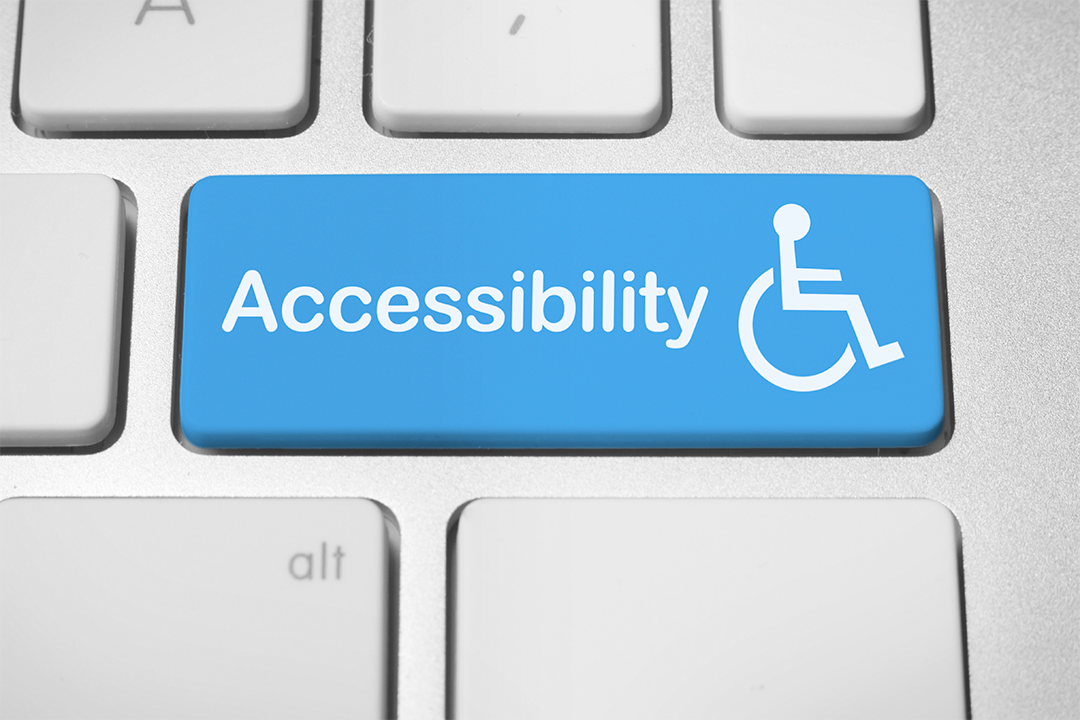ADA accessibility (Americans with Disabilities Act), we’ve all heard about it, and most of us have probably thought about it, but how many of us have actually done something about it? After a quick search through a number of websites from medium and small companies, I could not find one that was compliant. If you are in the United States, the time is now for you to get compliant.
This all started the other day when a friend who is a wine distributor called and said, “There is an article in Wine Spectator about fifteen wineries on Long Island being sued because their websites weren’t accessible to the visually impaired.” I responded with, “Please forward me the article.”
Lawsuits are being filed all over the country for non-compliance with the ADA’s Title III, Section 508 (Website Accessibility) requirements. For all of 2017, there were 7,663 lawsuits filed. In the first half of 2018, there were 4,965 filed. It is projected that there will be a 30% increase in filings, by the end of 2018.
California leads this year with 2,155, followed by New York with 1,026, then Florida with 882. After Florida, the numbers drop considerably with only seven other states having claims filed. Those include Arizona (87), Pennsylvania (73), Texas (68), Georgia (65), Louisiana (57), Massachusetts (49), and New Jersey (48).
A problem for everyone at this point in time is, the Department of Justice does not have any clear guidelines in place on how the ADA applies to the internet. According to the article, “The department is still evaluating whether specific web-accessibility standards are necessary to ensure compliance with the ADA. For a compatible set of online-compliance standards, they have opted to refer to the Web Content Accessibility Guidelines created by the World Wide Web Consortium (W3C). Unfortunately, this has given lawyers looking to make a quick buck an express pass on the lawsuit superhighway.
In 2017, a class-action suit was filed against Blick Art Materials, LLC (“Blick[s]”). While the suit is still in its infancy, the Judge has already dismissed Blick’s Motion to Dismiss. The Plaintiff(s) claims in the lawsuit Blick’s website is “difficult, if not impossible for blind customers to use.” It is the intent of the lawsuit to cover all legally blind individuals. Blick’s is a New York corporation and the New York courts have adopted and ordered businesses to comply with the W3C guidelines. This includes implementing features like screen-reading software, making the color, word spacing, and text size customizable to website visitors. All browsers, i.e., Safari, Chrome, Firefox, Edge, etc. already make it very easy to change your text size.
While this would be wonderful in a perfect world, Chris Danielsen, director of public relations for the National Federation of the Blind, recommends that businesses with online platforms work directly with visually-impaired consumers. The theory is “It basically incorporates human testing into the process of making a website accessible.” As I said, this would be wonderful in a perfect world.
After reading the article and my research, I realized it was now time for me to get my website and my client’s websites compliant. I’m not in the mood for a lawsuit and neither are they. But the first question was, “Exactly how do I go about doing this?” It’s not possible for me to have a visually-impaired person sitting next to me going over every single client’s website.
Since were are no longer just worrying about images and alt tags, a quick Google search brought up several plugins that offered solutions. The plugin I found most user-friendly and free was Accessibility by UserWay. They have over 5,000 active installations and a strong five-star rating. With the UserWay widget, without refactoring your website’s existing code, the following is taken care of:
The existing code will be increased to be compliant with WCAG 2.0, ATAG 2.0, and Section 508 requirements.
Strengthen any weak spots that might cause issues.
Your website will be more accessible for those with mobility issues as well.
I’ve installed it on my website as well as several clients’ websites, and the process takes roughly 10 minutes. While it may not cover everything, because at this point in time no one knows what everything is, I and my clients can at least prove we are trying to help those who are visually and mobility impaired.
If your website is on the Squarespace, Weebly, or the Wix platform, none of them have any solutions. They have a lot of suggestions, with statements like “Coming Soon,” and then this from Wix:
Currently, you can improve your site’s accessibility by following the steps in this article. However, Wix.com cannot guarantee or ensure that the use of our services is compliant with all accessibility laws and worldwide regulations.
Important:
You are responsible for reviewing and complying with local legislation applicable to you or to your site visitors.
We are always working to update and improve our products, and your feedback is hugely appreciated.
Are you on one of these platforms? Or do you need help with setting up the Accessibility by UserWay plugin, then let’s chat?


Thank you for your research and reflections. I am using Weebly, any updates on accessibility as of date? Thanks!
Hi Susan,
I’m glad you enjoyed the article. I know very little about Weebly, but from what I’ve heard, they have nothing in the works in the near future regarding the ADA requirements.